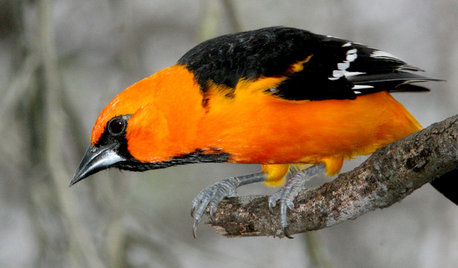black cottonwood--allelopathic?
plantknitter
13 years ago
Related Stories

GARDENING GUIDESPlant Black Cherry Trees for the Birds and Bees
Plant Prunus serotina in the Central and Eastern U.S. for spring flowers, interesting bark and beautiful fall color
Full Story
GARDENING GUIDESBackyard Birds: Orioles Return After Spending Winter in the Tropics
These colorful songbirds prefer woodlands and forest edges, but they’ll visit yards with fruit-producing trees and shrubs
Full Story
GARDENING GUIDES8 Plants for a Deliciously Fragrant Fall Garden
Scent the autumn air with the perfume of caramel corn, honey and spices by adding these intoxicating plants to your landscape
Full Story
MOST POPULARThe Unexpected Color That Goes With Everything
Move over, beige. Green is staking its claim as the freshest neutral around
Full Story
GARDENING GUIDESDo You Have This Invasive Plant in Your Yard?
Garlic mustard is spreading across the U.S. Here’s how to spot it and what to do
Full Story
HOUZZ TOURSHouzz Tour: Kerrie Kelly's California Style
Glimpse Inside the Interior Designer's Vintage Modern Bungalow
Full Story
SAVING WATERHouzz Call: Are You Letting Go of Your Lawn?
Many facing a drought are swapping turf for less thirsty plantings. If you’re one of them, we’d like to hear about it
Full Story
HOUZZ CALLHouzz Call: Show Us Your 8-by-5-Foot Bathroom Remodel
Got a standard-size bathroom you recently fixed up? We want to see it!
Full Story
SAVING WATERXeriscape Gardens: How to Get a Beautiful Landscape With Less Water
Conserve water and make gardening much easier with the xeriscape approach’s 7 principles
Full Story
LANDSCAPE DESIGNThe 7 Best Plant Types for Creating Privacy and How to Use Them
Follow these tips for using different kinds of plants as living privacy screens
Full StoryMore Discussions









gardengal48 (PNW Z8/9)
Embothrium
Related Professionals
Brentwood Landscape Architects & Landscape Designers · Rancho Palos Verdes Landscape Architects & Landscape Designers · Clermont Landscape Contractors · Cockeysville Landscape Contractors · Fairfield Landscape Contractors · Hicksville Landscape Contractors · New Braunfels Landscape Contractors · Ponte Vedra Beach Landscape Contractors · Rosemount Landscape Contractors · Wheat Ridge Landscape Contractors · Delhi Fence Contractors · El Segundo Fence Contractors · Fair Oaks Fence Contractors · Ramona Fence Contractors · Staten Island Fence ContractorsplantknitterOriginal Author
botann
plantknitterOriginal Author
Embothrium
botann